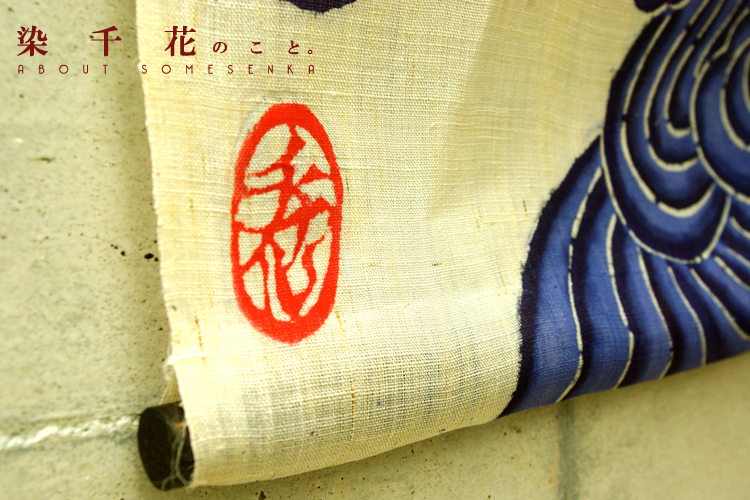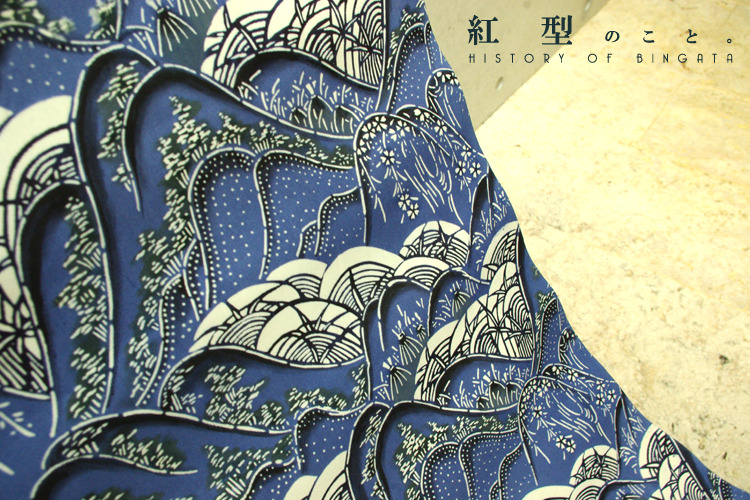
Labaratory of Bingata “Somesenka”
We express the vibrant colors of the ocean, sky, and plants lit by the Okinawan sun through the traditional art form called Bingata.
Every piece made by Somesenka is different.
Even with the same design, each different piece of fabric brings a new feeling to the piece created.
Different fabric also changes the color scheme and layout.
The mood and feeling of each piece are given much thought and focus.
Therefore, we do not mass-produce, every product is hand made.
The product that you receive will be your one of a kind Bingata, and we hope that it will be a wonderful experience.

History and Origins of Bingata
Dyeing and Weaving in Okinawa
Okinawa was an island very poor in resources. Because of that, the maritime people of Okinawa used their excellent navigational skills to trade in order to stimulate the economy. During the 14th century, by trading with China, Southern Countries, and Yamato (Japan), Okinawa drew influence from their culture, especially from China and Yamato, to create its own unique culture. This new culture and its artwork successfully thrived.
Etymology of Bingata
Along with Kyo-Yuzen, Kaga-Yuzen, and Edo-Komon, Bingata is one of the main traditional dyeing techniques in Japan.
A hand-colored dye using resist paste technique is called Katakichi. A stencil dye with an indigo-blue shade is called E-Gata, and a masking with the tube pulling method is called Nuibichi.
The prints were named Bingata in the early Showa Era, but in the old Okinawan literary documents, stencil dye were written as stencil dye, color dye, red different type, red soak color type, color paint type, color paint, etc.
Theory of origin of the name Bingata
1. Theory that the word came from Bengal, India.
2. Theory that it is an abbreviation of the word “red soak color dye” meaning colorful dye design.
3. Theory that the Chinese Fujian Province brought a dye from Bin, which transformed into Bingata.
